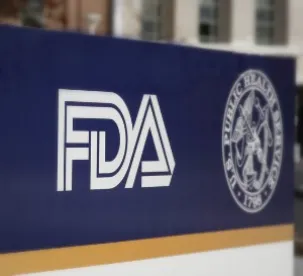The US Food and Drug Administration (FDA) announced several initiatives to increase access to ventilators and other respiratory devices during the Coronavirus (COVID-19) pandemic, as well as relaxed enforcement of certain risk evaluation and mitigation strategies requirements.
IN DEPTH
On March 22, 2020, the US Food and Drug Administration (FDA) announced several initiatives in its Enforcement Policy for Ventilators and Accessories and Other Respiratory Devices During the Coronavirus Disease 2019 (COVID-19) Public Health Emergency that are intended to increase access to devices that facilitate respiration, including ventilators and their accessories.
FDA indicates it will exercise enforcement discretion for certain hardware, software and material modifications to specific FDA-cleared devices without requiring a new 510(k). Examples of modifications subject to this policy include:
-
Making hardware or software modifications to add wireless or Bluetooth capability for remote monitoring
-
Modifying motors, batteries or other electrical components (e.g., to address shortages in current components)
-
Making material changes to components in the gas pathway or with other patient tissue contact
-
Modifying software to change ventilation parameters
-
Modifying software to implement physiological closed loop automated algorithms for oxygen titration, provided the device is the subject of an FDA-approved investigational device exemption.
The guidance signals FDA’s efforts to clear the way for healthcare providers (HCPs) to use as many potential interventions as possible to manage projected patient caseloads during the Coronavirus (COVID-19) pandemic. FDA recommends designing, evaluating and validating changes to hardware, software, materials or duration of use in line with FDA’s recognized performance standards. Manufacturers must also document changes in the device master record and change control records, consistent with 21 CFR §§ 820.30 and 820.180. FDA recommends providing labeling and instructions for use that describe the new indications, claims or functions; describe performance, potential risks and risk mitigations; and clearly distinguishing between cleared or approved indications and those that are not cleared or approved.
FDA indicates that it does not intend to object to certain modifications to the intended use of certain FDA-cleared products without prior FDA clearance. For example, FDA notes that ventilators may be intended for use in non-cleared environments, e.g., ventilators designed for use in an ambulance or short-term emergency use may be repurposed for long-term use, and ventilators intended for use in a healthcare facility may be repurposed for home use. The agency also suggests that the use of devices intended to treat sleep apnea and continuous positive airway pressure (CPAP) devices may be intended to treat respiratory insufficiency (provided design mitigations are in place to minimize aerosolization) and oxygen concentrators may be used for the primary supply when medically necessary or clinically appropriate.
FDA will allow manufacturers to market certain ventilators and anesthesia gas machines, components and accessories beyond their indicated shelf life, provided they are otherwise used in accordance with healthcare facilities’ institutional protocols and useful life is limited to no visible malfunctions or device soiling.
Finally, FDA encourages manufacturers to reach out to FDA at CDRH-COVID19-Ventilators@fda.hhs.gov regarding whether to pursue an emergency use authorization (EUA) to allow them to distribute ventilators that currently lack FDA clearance or approval, regardless of whether the manufacturer has previously engaged in manufacturing medical devices. FDA provides suggestions for information manufacturers should include in their email, e.g., product labeling, whether the product is cleared or approved in another jurisdiction, whether the device complies with FDA-recognized performance standards and complies with FDA’s quality system regulation (21 CFR Part 820) or ISO 13485, and whether the device is designed with a power supply suitable for use in the United States.
The guidance leaves open the possibility that FDA will temporarily allow entities that currently manufacture ventilators and market them outside the United States to begin distributing ventilators in the United States prior to receipt of an EUA. Unlike the policy previously articulated for certain COVID-19 diagnostic tests (discussed here), which allows certain laboratories to begin offering validated tests without any action from FDA, FDA intends to notify ex-US ventilator manufacturers if they are eligible for this pre-EUA enforcement discretion. Entities not previously engaged in medical device manufacturing, however, will be required to obtain an EUA before marketing ventilators in the United States.
Risk Evaluation and Mitigation Strategies – Laboratory Testing and Imaging Studies
Also on March 22, 2020, FDA issued its Policy for Certain REMS Requirements During the COVID-19 Public Health Emergency Guidance for Industry and Health Care Professionals in response to queries regarding compliance with certain risk evaluation and mitigation strategies (REMS) during the public health emergency.
When approving human drugs, FDA may require REMS, including a medication guide, a patient package insert, a communication plan, or certain packaging and safe disposal technologies for drugs that pose a serious risk of abuse or overdose, and a REMS implementation system to monitor, evaluate and improve implementation of the elements. FDA may also require “elements to assure safe use,” (ETASU), such as requirements that HCPs or pharmacies have particular training, experience or certification to dispense the drug; that drugs be dispensed in particular settings, such as hospitals; that drugs be dispensed to patients with evidence or documentation of safe use conditions (e.g., laboratory test results or imaging studies); or that patient monitoring is present or patients are enrolled in a registry.
FDA is relaxing enforcement of certain REMS requirements in light of current COVID-19 social isolation protocols, hospital and HCP resource limitations, and the risks of exposure (particularly for immunocompromised patients). For example, in the case of drugs requiring patient laboratory testing or imaging studies as a part of the treatment protocol or REMS, the agency permits HCPs to use their best medical judgment in weighing the risks and benefits of continuing the treatment in the absence of such tests. If the HCP decides continued treatment is advisable, she should communicate this judgment and the associated risks to the patient.
FDA does not intend to take enforcement action against sponsors or others for accommodations related to these testing requirements. However, manufacturers should document and summarize in their next REMS assessment reports the steps taken to accommodate patient access to these REMS drugs.






 />i
/>i
